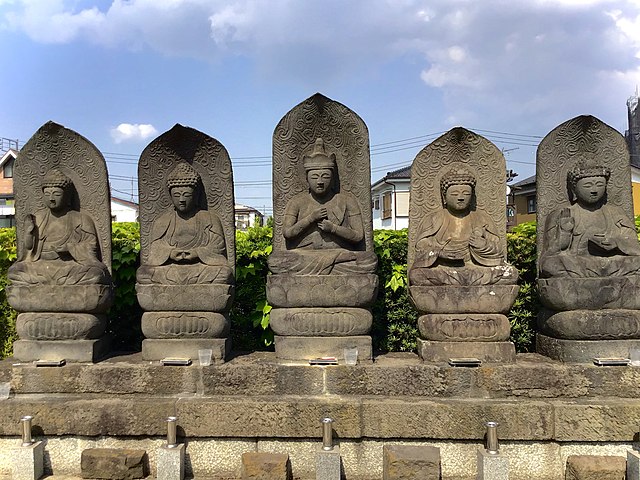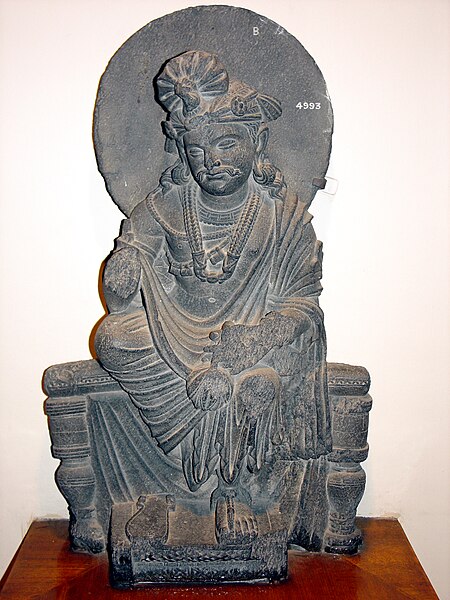In Mahayana and Vajrayana Buddhism, the Five Tathāgatas or Five Wisdom Tathāgatas, the Five Great Buddhas, the Five Dhyani Buddhas and the Five Jinas, are five Buddhas which are often venerated together. Various sources provide different names for these Buddhas, though the most common today are: Akshobhya, Ratnasambhava, Vairocana, Amitābha, and Amoghasiddhi.
Jin Dynasty (1115–1234) statues of the Five Tathagathas in Shanhua Temple in Datong, Shanxi, China. From left to right: Amoghasiddhi, Amitābha, Vairocana, Ratnasambhava, Akshobhya
The Garbhadhatu Mandala depicts the adibuddha Vairochana, surrounded by four Buddhas (golden) and four Bodhisattvas (white); clockwise from top: Ratnaketu, Samantabhadra, Samkusumitaraja, Manjushri, Amitabha, Avalokiteshvara, Divyadundhubhimeghanirghosa, Maitreya.
Jin Dynasty (1115–1234) statue of Amoghasiddhi in Shanhua Temple in Datong, Shanxi, China
Jin Dynasty (1115–1234) statue of Amitabha in Shanhua Temple in Datong, Shanxi, China
Mahāyāna is a term for a broad group of Buddhist traditions, texts, philosophies, and practices developed in ancient India. It is considered one of the three main existing branches of Buddhism, the others being Theravāda and Vajrayāna. Mahāyāna accepts the main scriptures and teachings of early Buddhism but also recognizes various doctrines and texts that are not accepted by Theravada Buddhism as original. These include the Mahāyāna sūtras and their emphasis on the bodhisattva path and Prajñāpāramitā. Vajrayāna or Mantra traditions are a subset of Mahāyāna which makes use of numerous tantric methods Vajrayānists consider to help achieve Buddhahood.
An illustration in a manuscript of the Aṣṭasāhasrikā Prajñāpāramitā Sūtra from Nalanda, depicting the bodhisattva Maitreya, an important figure in Mahāyāna
The Five Tathāgatas in Shishoin Temple (Tokyo). A unique feature of Mahāyāna is the belief that there are multiple Buddhas which are currently teaching the Dharma
Mahāyāna Buddhist triad, including Bodhisattva Maitreya, the Buddha, and Bodhisattva Avalokiteśvara. 2nd–3rd century CE, Gandhāra
Seated Avalokiteshvara bodhisattva. Gandharan, from Loriyan Tangai. Kushan period, 1st – 3rd century CE. Indian Museum, Calcutta








